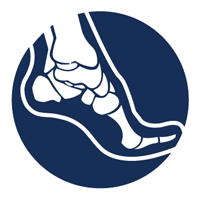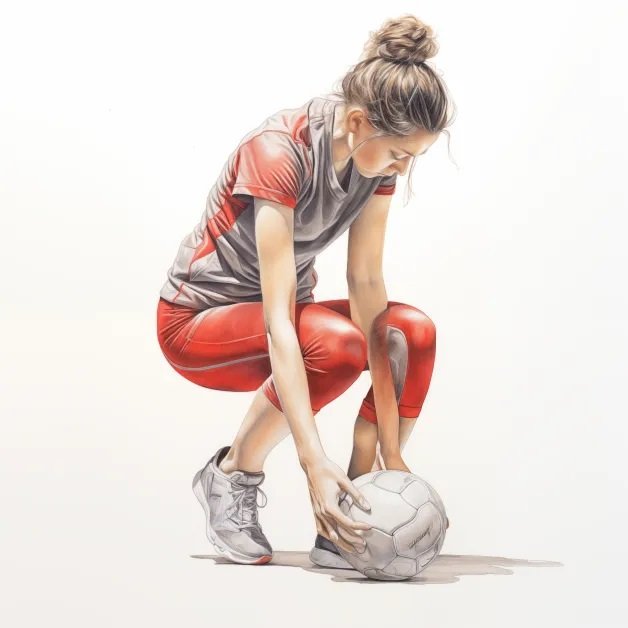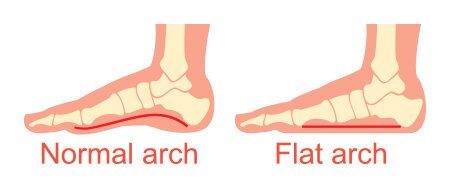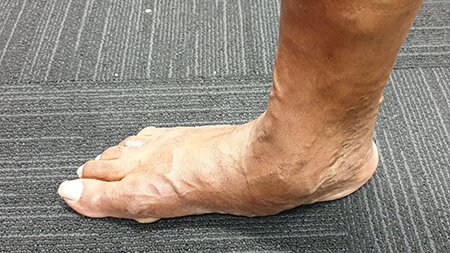What is Flat Foot and why am I missing a foot arch?
Most people have feet in an arch shape allowing the foot to support the weight of the body while standing in an erect posture. The space below the arch of the foot varies between different people but in most cases should be raised off the ground and only the heel and ball of the foot bearing the weight.
Flat foot in both feet can occur naturally in some people and never cause any issues. Infants and children usually have flat feet as the foot arch is a result of normal bone, tendon, ligament, and muscle development from ages 3 to 5.
However, if you are experiencing pain, discomforts, or have noticed that a single foot has gradually lost its shape, then treatment may be necessary. A loss of the arch of the foot may involve issues with tendons or bones in the foot and problems will continue to worsen without intervention.
What are the causes of Flat Foot?
Flat foot can be caused by a number of different conditions affecting the tendons, muscle, ligaments or bones of the foot. Most cases of flat foot are presented in a single foot although cases where both feet are affected are not uncommon.
Common causes may include:
Foot or ankle injury
Arthritis or rheumatoid arthritis
Nervous system or muscle diseases (muscular dystrophy or cerebral palsy)
Posterior tibial tendon dysfunction
Obesity
Pregnancy
If you have noticed that your foot or feet is changing shape, losing its arch, or feels like they are collapsing inwards then you should consult medical advice.
Illustration showing normal foot arch vs flat arch
What is Posterior Tibial Tendon Dysfunction?
One of the major support tendons of foot arch is called the posterior tibial tendon or tibialis posterior tendon. This large tendon connects the calf muscles to a bone in the foot arch called the navicular.
Dysfunction or rupture of this tendon is a common cause of flat foot in adults and typically occurs in one foot. In addition to flattening of the foot arch, you may experience pain, tenderness, and swelling on the inside of the shin, ankle, or foot. Damage or dysfunction of the tendon may be a result of sporting injuries, falls, or overuse (such as high impact sports, running, stair-climbing). Dysfunction of the tendon can also occur gradually, and symptoms may only be noticed slowly. Unfortunately, this condition will also gradually get worse especially if it is not detected and treated early.
You can test your tibial tendon function by performing a heel raise. If you are unable to raise your heel and stand on your tiptoes, it may indicate that there is an issue with the posterior tibial tendon.
Flatfoot can result in other parts of the foot and leg structure compensating in posture leading to the toes turning outwards and the ankles rolling inwards.
What are some symptoms of Flat Foot?
Pain or discomfort in the foot is the most common complaint of acquired flat foot. You may experience pain while walking or running on the inside border of the foot and ankle. Pain is usually worse with weight-bearing activities but can also be experienced if you are standing up for long periods of time.
Flattening of the foot will result in both the loss of space under the foot arch and change the shape of the foot with the toes beginning to turn outwards while the ankle rolls inwards. You may notice a change in posture as other parts of the body frame compensate for the foot’s weight bearing ability.
Because the structure of the foot and weight-bearing ability of the body is affected with flat foot, you may also experience pain in other areas such as the lower back, hips, knee, calf, or lower legs.
Sensations of tingling or an electric-like sensation may also be felt in the ankle and foot as the muscles and tendons may be impinging on the nerves in the foot.
Other symptoms may include swelling of the ankle, foot or shin. Swelling usually follows the course of the posterior tibial tendon which runs from about the midpoint of the foot arch, back towards to the inside knob of the ankle (medial malleolus) and to the back of the leg. However, swelling and tenderness may be felt in other weight bearing areas of the body such as the lower back.
Does Flat Foot get worse?
Many causes of flat feet are progressive and unfortunately, this means that the longer that flat feet that remains untreated the worse it becomes over time.
Some complications of untreated flat feet may include arthritis and inflammation of the joints as well as stiffness of the foot and increasing difficulty in treatment.
Flatfoot with noticeable loss of natural foot arch.
How is Flat Foot diagnosed?
The initial step of diagnosing flat foot is a medical examination by an orthopaedic specialist surgeon. This includes a very thorough Look, Feel, Move approach of the affected foot.
The orthopaedic specialist surgeon will examine the foot, feel and palpate relevant areas such as the ankle and toes then ask you to perform specific movements such as standing-up, performing a heel lift, walking a short distance, or moving your foot in a certain direction.
Imaging of the affect foot is then performed by plain film X-RAY (Weight Bearing) which allows the orthopaedic specialist surgeon to view the overall shape of the foot and check for misalignments of bones or other abnormalities such as arthritis.
The orthopaedic specialist surgeon may also order magnetic resonance imaging (MRI) to check the status of the tendons.
What are surgical treatment options for Flat Foot?
Depending on the presentation of flat foot, there are a range of methods that can be used for treatment. These can as easy as getting simple insoles for your shoes and physiotherapy exercise to strengthen different parts of the foot.
However, if these treatment options fail to bring relief to pain and discomfort then surgical intervention is recommended.
The most commonly used type of flatfoot surgery is called flatfoot reconstruction surgery where an orthopaedic specialist surgeon can repair bones or tendons that may be causing pain and deformities of the foot.
Read our article on Flat Foot Reconstruction Surgery.
Here’s what to do next…
Research your condition and treatment options
We provide extensive information about flat foot reconstruction surgery on our procedures page.
Do further research and contact us with any questions you may have.
Book a consultation with Associate Professor Roderick Kuo
Prior to your appointment, please obtain a referral from your General Practitioner. This will allow you to claim a Medicare rebate on the consultation fees.
Call or email our team at Specialty Orthopaedics to book your consultation.
Important: Information is provided for guidance only. Individual circumstances may differ and the best way to approach a condition is by individual medical consultation where a specialist can tailor a treatment plan to suit your needs.
Edited by Dr Roderick Kuo
Last updated: 5/5/24





